If you are of a certain age you will remember a certain episode of Friends. “The One With Ross’ Inappropriate Song” is the seventh episode of the ninth season of Friends, which aired on November 14, 2002. Ross is the first to make baby Emma laugh, but Rachel is disgusted to learn that he made her laugh by rapping ‘Baby’s Got Back’ by Sir Mix-A-Lot (containing the line, “I love big butts”). Well, the joy of drinking a Malt Whisky by the same name, came as a big surprise to me yesterday. It was an amazing afternoon of exploration and fun.

Spending time in Edinburgh means exploring the world of Malts. By learning more and expanding our knowledge we can increase our perception of what is possible. No experience is necessary – just an open mind and a notebook to record your discoveries.
Malt whisky is the ‘original’ whisky of Scotland. Although other grains were used, barley was grown specifically for making beer and whisky. However, with the success of blended whisky in the late 19th century, little was drunk as single malt outside the Highlands until the 1980s, when ‘the vintages of the North’ were rediscovered by an enthusiastic public and began to be made available by distillery owners.
Did you know?
- More than one billion bottles of Scotch are exported every year
- The biggest market is in France
- The first reference to Scotch Whisky was in 1495
- The first single malt to be marketed outside Scotland was by Glenfiddich in 1963.
Currently, there are around 90 operating malt whisky distilleries in Scotland – it is difficult to be precise, since sometimes distilleries go out of production for periods, to balance stock levels. Single malts from a further 30-odd now closed distilleries may still be found.
Although made from very simple materials – malted barley, water and yeast – the make of each distillery has an individual character, owing to a variety of factors, such as the length of fermentation time, the style and size of the stills, and how they are operated, the type of condensers used and amount of spirit saved (called ‘the cut’).
By law, Scotch (both malt and grain whiskies) must be matured in oak casks in Scotland, and the casks themselves can make a huge contribution to the flavour of the finished product, according to a) how long the whisky has been left to mature, b) how often the individual cask has been used to mature Scotch and c) whether the cask is made from European oak or American oak. This makes it difficult to identify the mature products of individual distilleries.
Since at least the 1880s, blenders have identified different styles of whisky coming from different parts of Scotland. The original division, dating from the 1780s, was between ‘Lowland’ whisky and ‘Highland’ whisky. Then the whiskies made in Campbeltown and Islay were discerned to be different, and the whiskies of Speyside were added to the list.
With the dramatic growth of interest in single malt whiskies since the 1980s, the ‘Highland’ region has been sub-divided into Northern, Western, Eastern, Southern and Islands.
In truth, regional differences in the style and flavour of malt whiskies has more to do with tradition (how a malt is made in one place or another) than terroir, and although it is not possible to make a malt with identical character to another in a different distillery, it is possible to imitate a regional style out-with the region in question.
The journey of knowledge begins with a single step. In my case, stepping into a building on Queen Street (Newtown, Edinburgh) that gave me an insight into some of the best Malt Whisky drams in the world. It came by accident (walking from lunch in Old Town) and the excitement of entering a new world is to remind me that this is work.
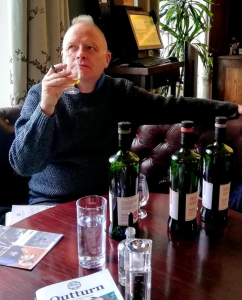
So, today I joined the Scottish Malt Whisky Society in Edinburgh. The bonus is a club that has rooms, bars, newly released Malts and expertise. The result is that I tasted 4 wonderful Malt Whiskies and bought my favourite to take home. The tasting process (and here is a picture of my hard work taking place) is wonderful and enlightening.
At the heart of this club are the members, a curious bunch who have intriguingly named whiskies (e.g. I Like Big Butts) and are all characters in their own right. They come from all walks of life and are united and constant in their passion – to share the world’s best whiskies, and to be proud to belong to the world’s most colourful and dynamic whisky club.
Their description of their own members is fascinating:
“We’re a fireman in fishnets. A real charmer. A bittersweet eccentric character. An angel in a sauna wearing wellies. We’re manly and medicinal. Perfumed, sweet and summery. Lip-smacking and cockle-warming. Sumptuously simple but far from dull. Distinctive and delectable. A haven in a heartless world. Like our intriguingly named whiskies, we’re all different, and we all have our own personality. But we are united and constant in our passion – to share the world’s best whiskies, to bring them to life, and to make you proud to belong to the world’s most colourful whisky club.”
So, as part of the journey was to discover 4 new Malts and decide which I liked best (for purchase). The setting is on the 2nd floor overlooking Newtown and out towards Fife. The room was ideal for tasting and making notes (see below my notebook):
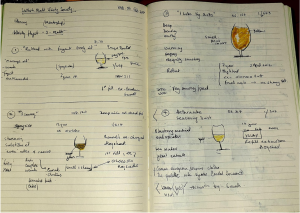
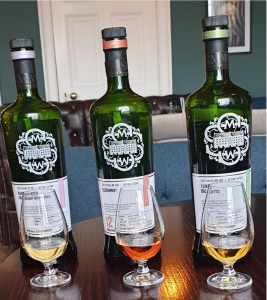
- I Like Big Butts [7-year-old (bottled 2nd April 2012) Highland, from ex-Oloroso barrel]
- Deep, densely earthy, warming, peppery, very smokey, robust
- Colour: Deep yellow
- Rubbed with fragrant body oil [12-year-old (bottled 1st November 2001) Speyside, from ex-bourbon barrel]
- Massage oil smell, warm, fragrant, rose and lavender notes
- Colour: Very pale yellow
- Scrummy [12 years, (bottled 23rd October 2007) Speyside, ex-Oloroso barrel].
- Substantial, even notes, fiery, rich, complex, Christmas pudding, fermented fruits
- Colour: Dark yellow
- Anthracite Seasoning Dust [10-year-old (bottled 20th February 2009) Islay, from ex-bourbon hogshead barrel.]
- Seaweed, coastal tastes, medicinal embrocation, warmth, long, smooth not smokey.
- Colour: Pale yellow
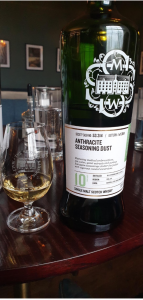
The one I decided to buy (on basis of tasting) was the Anthracite seasoning dust and it is now part of my collection. What a wonderful way to spend an afternoon.
Get out there and enjoy!


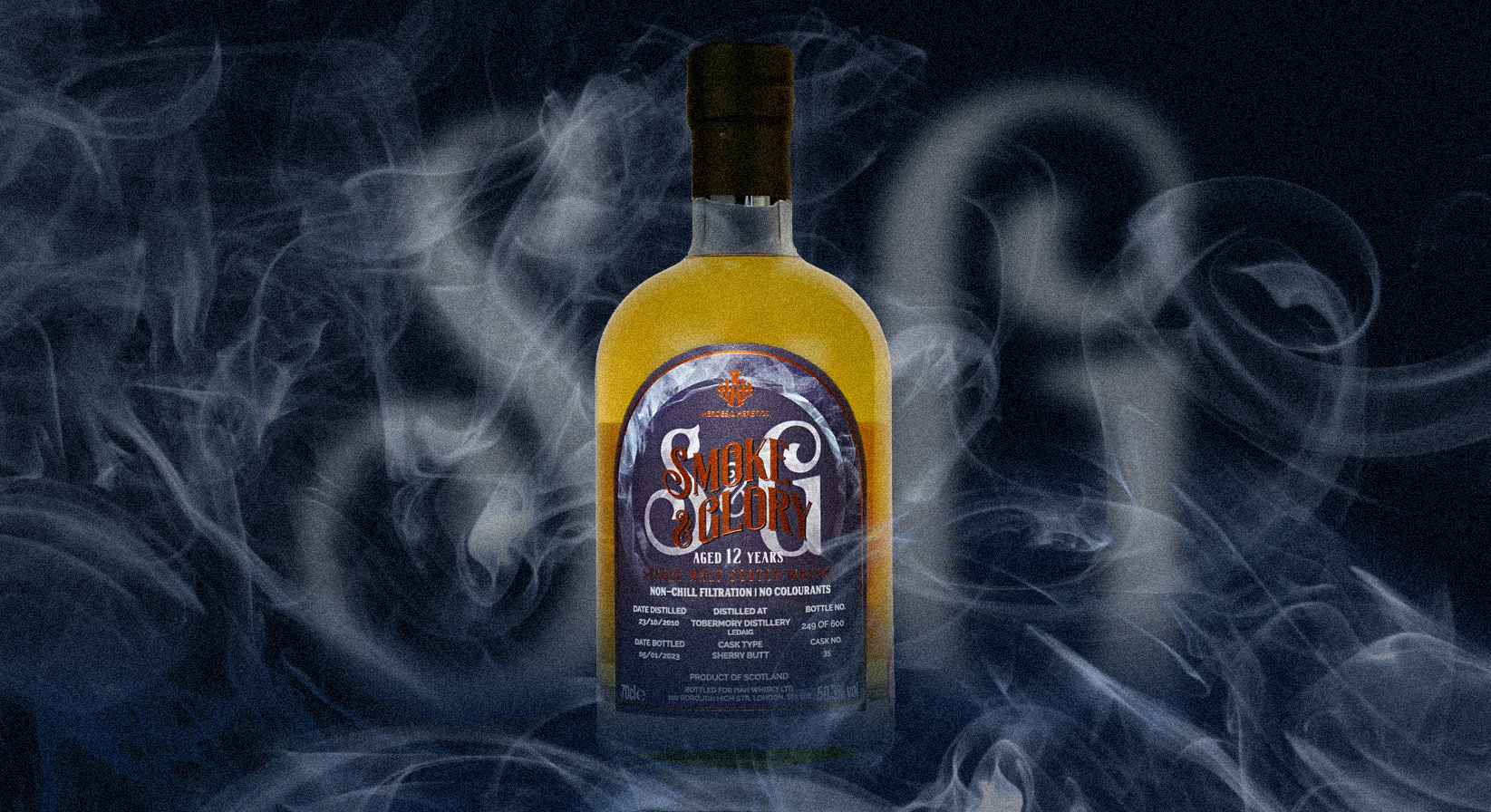
You must be logged in to post a comment.